I’ve been experimenting with low-knead, and no-knead doughs. I’ve come to the conclusion for the home baker at least, there is zero need for a mixer, and when kneading by hand, if you’re doing a cold ferment you can get away with very little kneading.
If you have an infirmity in your hands, and you can’t knead dough then by all means use a mixer. Or if you are making large batches of dough, then you need a mixer. But to make 3 or 4 or even 8 to 10 pizzas, skip the mixer. Knead by hand, and only knead for a couple of minutes. Any longer is not necessary in my experience.
My low-knead dough is so good, I’m seriously perplexed as to why so many recipes have you mix the living daylights out of the pizza dough. There’s no way I’m the first to discover this. No-knead bread doughs are common. I’ve not stumbled onto some cosmic hidden secret. I have a serious question; why? Why are you mixing your dough so long?
I had one person on Facebook tell me my no knead pizza was “odd.” Huh? I thought the comment was odd, especially since it was coming from someone who is a very experienced home cook and baker.
Maybe low-knead/no-knead pizza doughs are a great cosmic secret.
I have not tried a same-day low knead dough. It may not work. I cold proof all my doughs at least 24 hours. Gluten will form during cold fermentation, and that’s important to understand. We don’t need to create a strong gluten structure when we knead or mix, time will do it for us.
The texture of a low-knead dough is nothing short of remarkable. My taste in pizza is heavily influenced by two people. Chris Bianco and Dan Richer, of Pizzeria Bianco, and Razza Pizza Artigianale, respectively. Both their pizzas are exceptionally light, airy, crisp and chewy, but tender. That’s what I’m shooting for when I make pizza. I want my pizza to be light. I want it to be what I call “tender/chewy.” Mixing less creates a more tender crumb that still has plenty of the chewiness you expect of good pizza. It helps to make the pizza light, and that lightness aids crispness. The pizzas I’ve made using this method are an absolute joy to eat. And, if you’re used to dense, heavy, overly-chewy, bready pizza, try my method. You may be surprised at just how good homemade pizza can be.
Low-knead/no-knead pizza dough.
Use any flour you like. High gluten flours work better for a no-knead dough.
Put everything in a bowl, and stir until it forms a shaggy dough. Then knead in the bowl until it forms a dough, about 45 seconds. For a no-knead dough, cover and refrigerate for at least 24 hours, longer is better.
For low-knead dough, cover, and allow to rest for 30 minutes. Then, place the dough on a counter and knead by hand for two minutes. Cover and refrigerate for at least 24 hours, up to 96. 72 hours is best and will create a lighter, more crisp crust, though I’ve had excellent results letting the dough sit in the fridge up to five days.
After the cold ferment, ball the dough, cover, and proof at room temperature for about three hours before baking.
Bake in a 550F degree oven. Use convection if you have it. Place your stone or steel on the top most rack. Preheat at least 45 minutes. Bake the pizza for about three minutes, then turn on the broiler. Watch closely and pull from the oven when the crust is nicely browned and has some char, about two minutes.
If you have a high heat pizza oven, omit the sugar and oil. Cook accordingly.
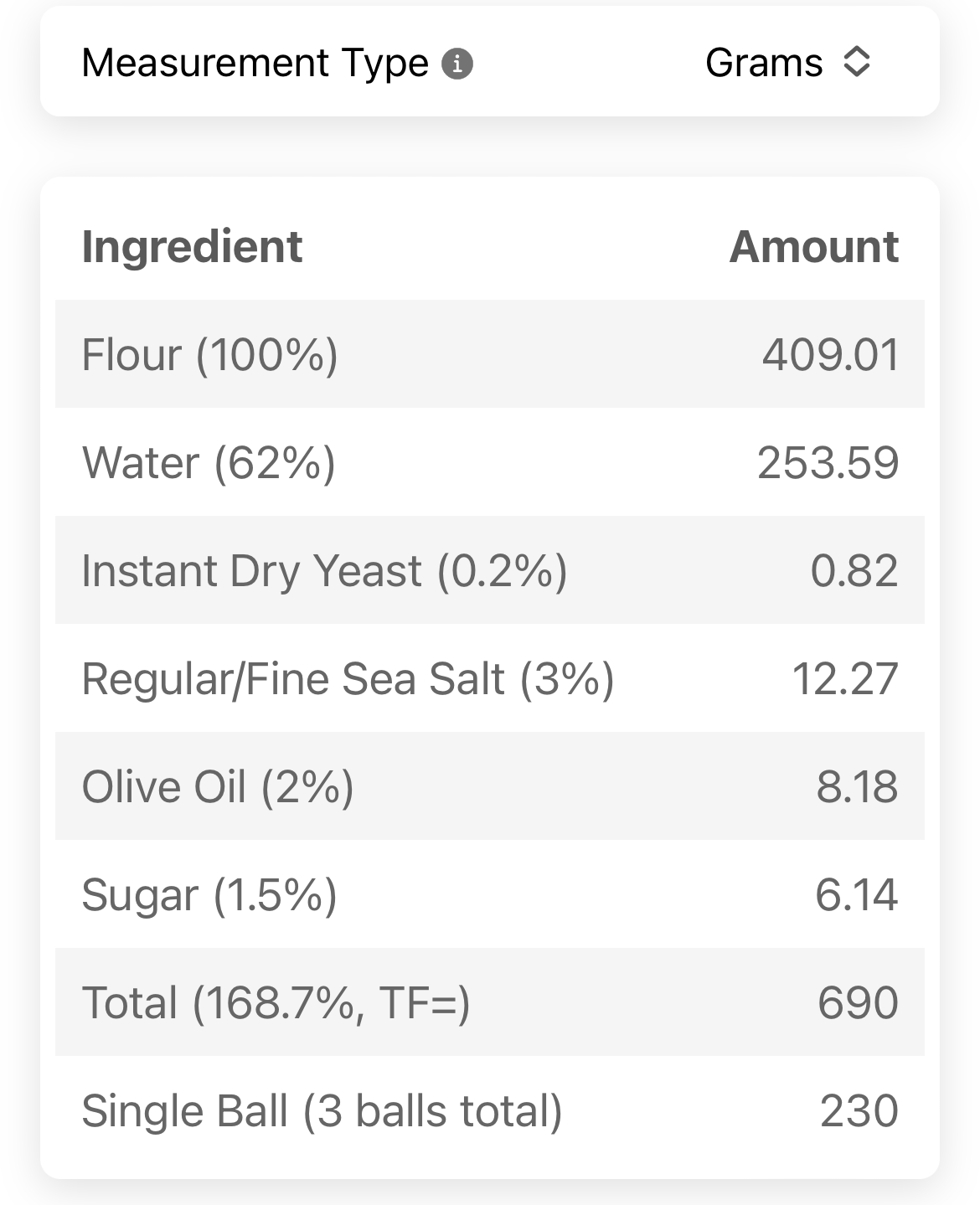
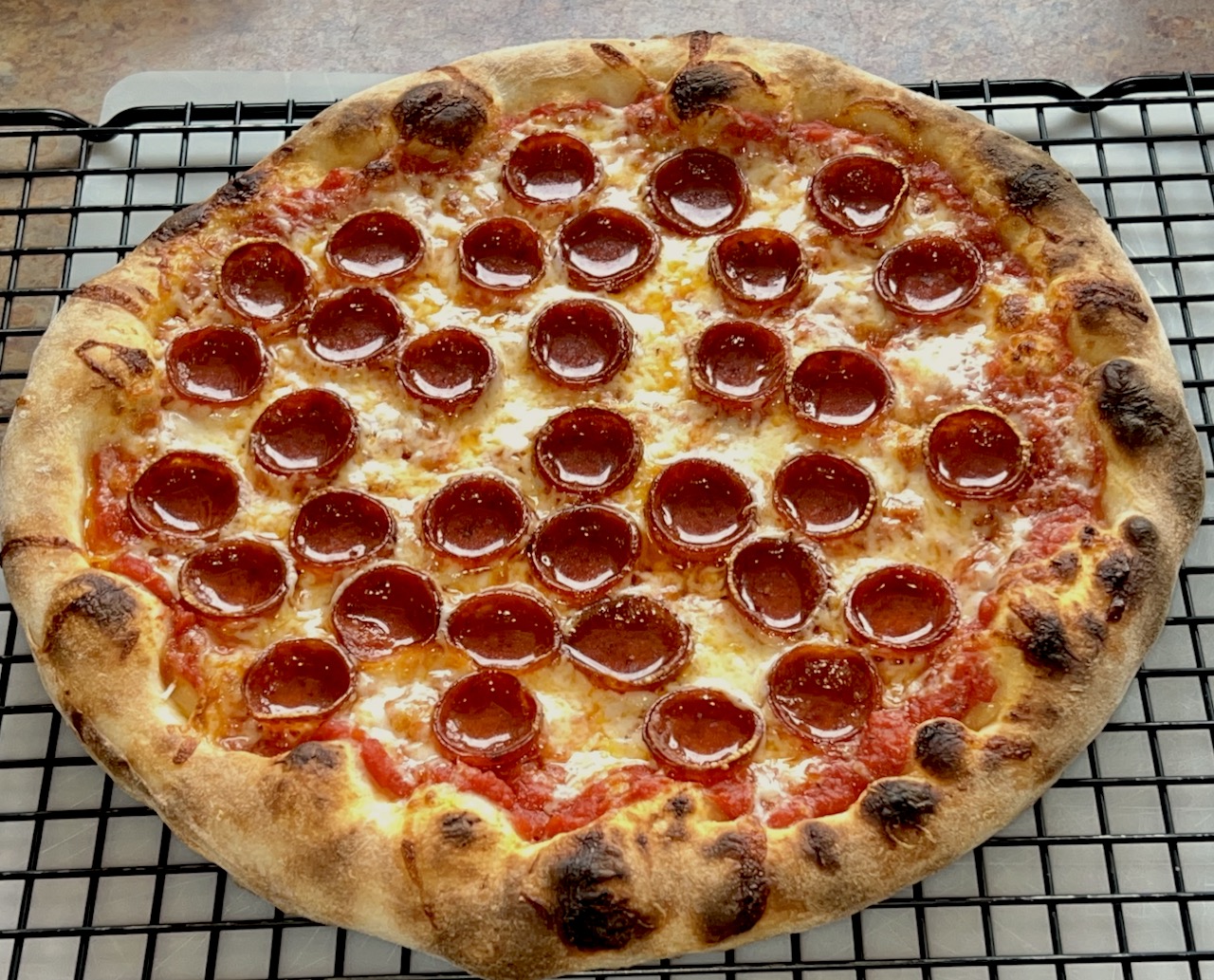
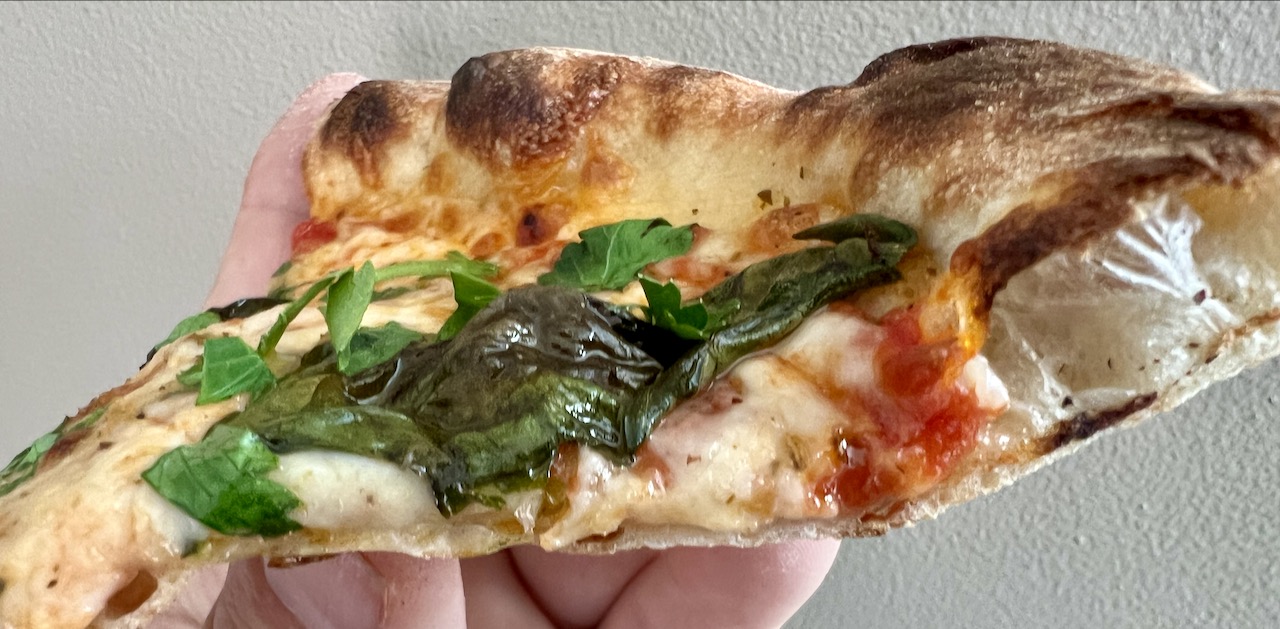
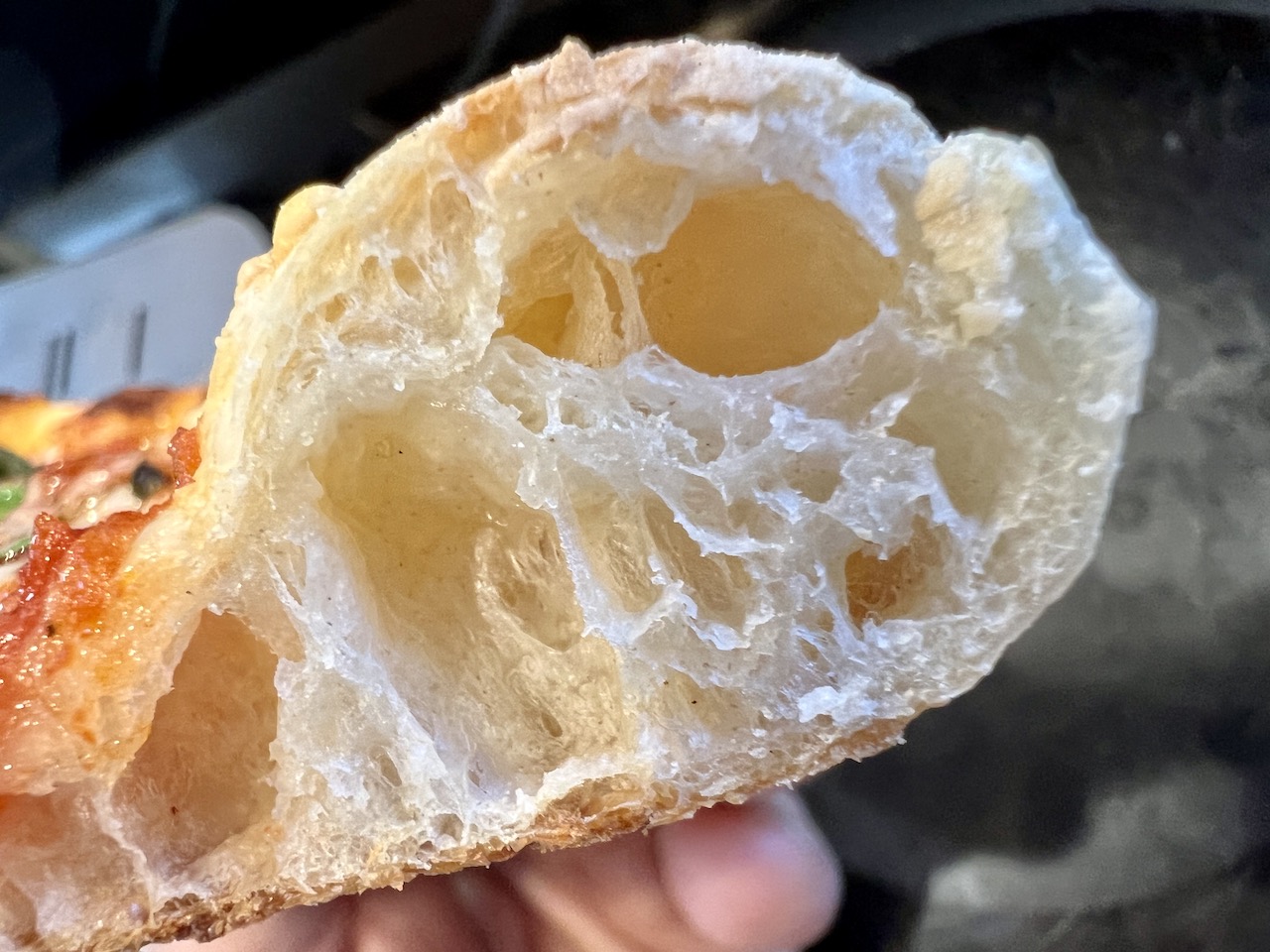

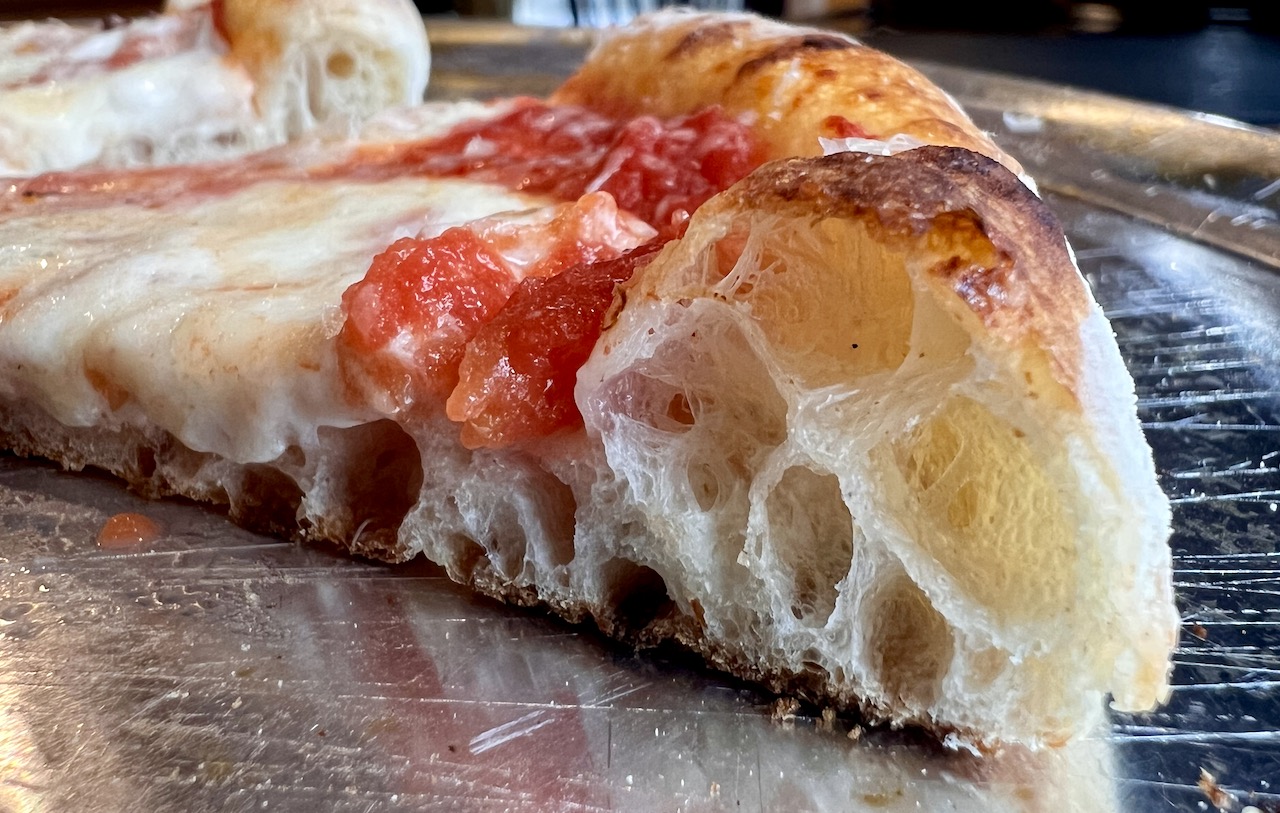
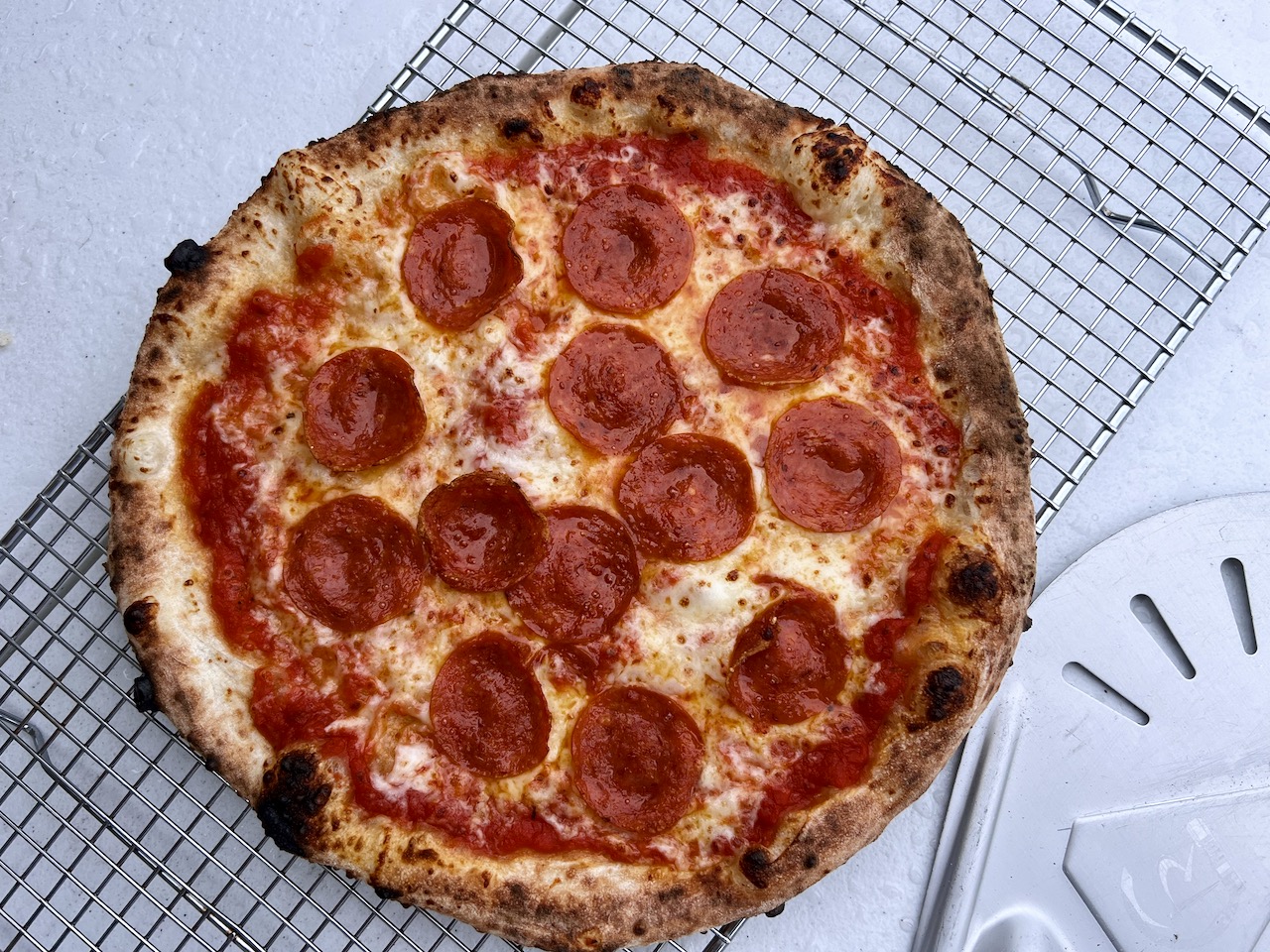

A crucial reminder of the art of baking. Thanks for the valuable tip—we’ll ensure to maintain the perfect texture and consistency in our baked goods!
LikeLike